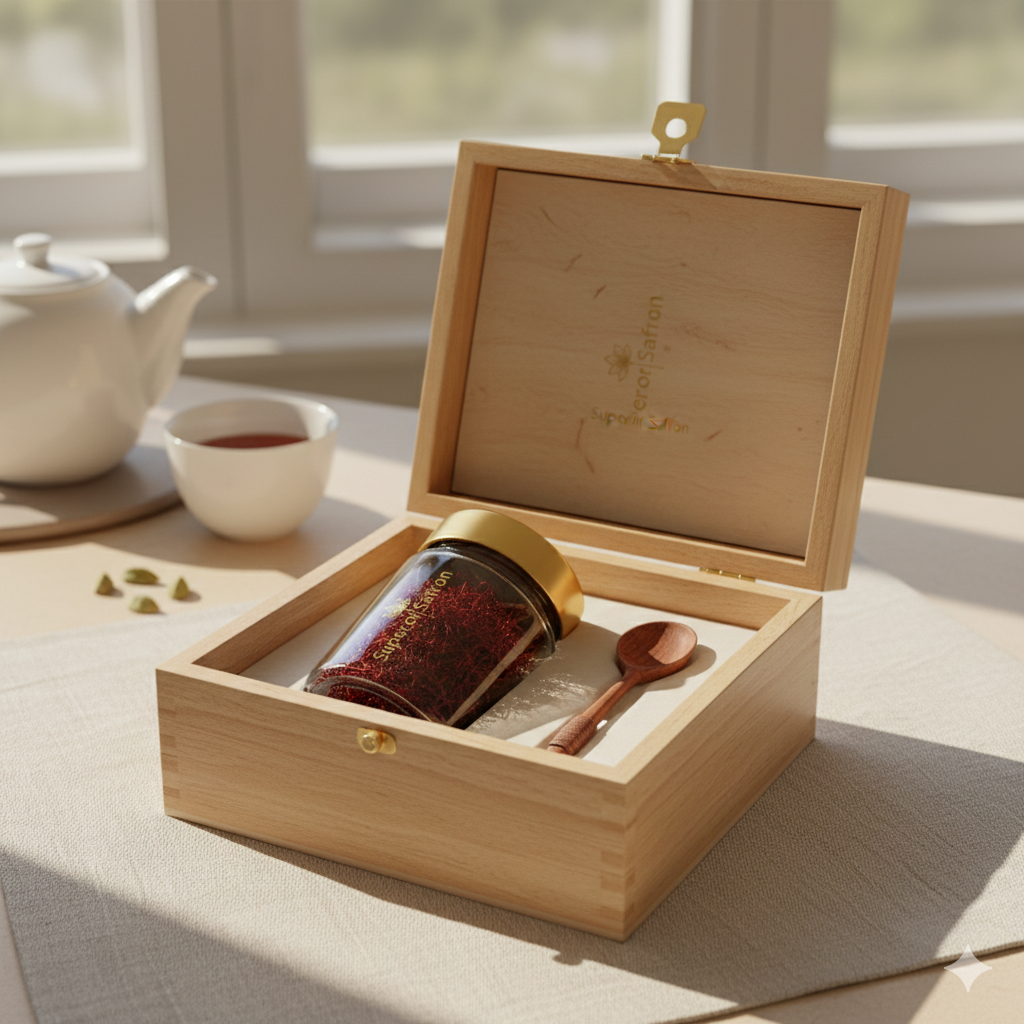Why Is Saffron So Expensive? The True Cost Behind the Spice

Saffron — often called "red gold" — is the world's most expensive spice. A single pound of premium saffron can cost thousands of dollars. But what makes this spice so valuable?
From its labor-intensive harvest to its limited bloom season, saffron's high price is a reflection of its rarity, craftsmanship, and centuries-old tradition. Let's uncover the true cost behind saffron and why it's worth every golden thread.
1. The Rarest Spice on Earth
Saffron comes from the Crocus sativus flower — a delicate purple blossom that blooms for only two to three weeks each year. Each flower produces just three tiny red stigmas, which must be carefully handpicked and dried to become the saffron threads we use.
- It takes around 150,000 flowers to produce 1 kilogram of saffron.
- That's roughly 75,000 blossoms for just one pound of spice.
- Every thread you see represents hours of delicate human labor.
This rarity alone makes saffron one of the most valuable agricultural products in the world.
2. Labor-Intensive Harvesting
Unlike most spices, saffron cannot be harvested by machine. Every step — from picking the flowers to separating the stigmas — must be done entirely by hand.
The Harvest Process
- Flowers bloom before sunrise and must be collected early to preserve aroma and color.
- Workers bend down to pick thousands of flowers one by one.
- Inside, the red stigmas are carefully separated from the petals.
- The threads are then gently dried to enhance their flavor and aroma.
A skilled worker can harvest only 60–80 grams of dried saffron per day — a fraction of what's needed for bulk production.
3. Tiny Yields from Every Flower
Each Crocus sativus flower provides only three threads, weighing less than a milligram. This means that even a large field of saffron produces only a few kilograms of spice per season.
The low yield per plant dramatically increases costs — not only in labor but also in land, irrigation, and maintenance. It's one of the reasons saffron is measured in grams rather than ounces.
4. Limited Growing Regions
Saffron requires very specific climatic and soil conditions — dry summers, mild winters, and well-drained soil. It grows mainly in a few parts of the world:
- Iran (produces over 90% of the world's saffron)
- Spain (La Mancha saffron, prized for its aroma)
- India (Kashmir) — known for its deep red color and high potency
- Greece, Afghanistan, and Morocco also produce smaller quantities.
Because saffron farming depends heavily on climate, droughts, or poor weather can significantly affect production — pushing prices even higher.
5. Complex Drying and Grading
After harvesting, saffron threads must be carefully dried to retain their color, aroma, and potency. This step is crucial — over-drying or overheating can ruin an entire batch.
Once dried, saffron is graded based on quality:
- Super Negin: Long, vivid red threads; purest aroma and color.
- Negin / Sargol: High-quality, strong flavor.
- Pushal: Contains some yellow parts; lower grade but authentic.
The grading process ensures consistency — but also adds to the cost due to quality testing and sorting.
6. Time and Skill Investment
From planting bulbs to packaging the final product, saffron production takes months of careful attention. Farmers invest years in cultivating healthy bulbs, maintaining the fields, and perfecting their drying methods.
Each thread represents:
- Manual labor from dozens of workers
- Years of experience in handling fragile blooms
- Traditional expertise passed down through generations
This craftsmanship cannot be rushed — and it's part of what makes saffron truly luxurious.
7. Fraud and Purity Control
Because saffron is so valuable, it's often adulterated with fake or low-quality substitutes like dyed corn silk or safflower petals.
To maintain purity, real saffron producers invest in:
- Laboratory testing for color strength (ISO 3632 standards)
- Hand inspection to remove contaminants
- Sealed packaging to protect from moisture and light
These strict quality controls further increase production costs — but guarantee authenticity.
8. Global Demand and Cultural Value
Saffron is more than a spice — it's a symbol of luxury, celebration, and wellness. Used in royal kitchens, religious rituals, and traditional medicine for centuries, it holds deep cultural significance in countries like Iran, India, and Spain.
Its demand in gourmet cuisine, perfumery, and cosmetics continues to grow, ensuring saffron remains one of the most sought-after natural products on earth.
9. Health and Wellness Benefits
Saffron's reputation isn't just culinary — it's also medicinal. Modern research supports its use for:
- Improving mood and reducing anxiety
- Enhancing memory and cognitive health
- Supporting heart and eye health
- Boosting immunity and skin glow
This dual role as both a culinary luxury and a wellness supplement adds to its overall market value.
10. The True Value Behind Every Thread
When you see saffron's price tag, you're not just paying for the spice — you're paying for:
- Thousands of handpicked flowers
- Weeks of careful harvesting
- Expert grading and drying
- Centuries of heritage and craftsmanship
Every saffron thread carries the story of countless hours of human dedication and the beauty of nature's rarest bloom.
Final Thoughts
Saffron's cost reflects its extraordinary journey — from delicate flowers in the fields to the luxurious golden threads in your kitchen. Unlike synthetic flavors or mass-produced spices, saffron remains pure, rare, and timeless.
So the next time you stir a few strands into your rice, tea, or dessert, remember: You're not just adding color — you're experiencing the essence of luxury and tradition in its purest form.
Saffron is more than a spice — it's the result of human dedication, nature's rarity, and centuries of tradition, making every golden thread truly priceless.